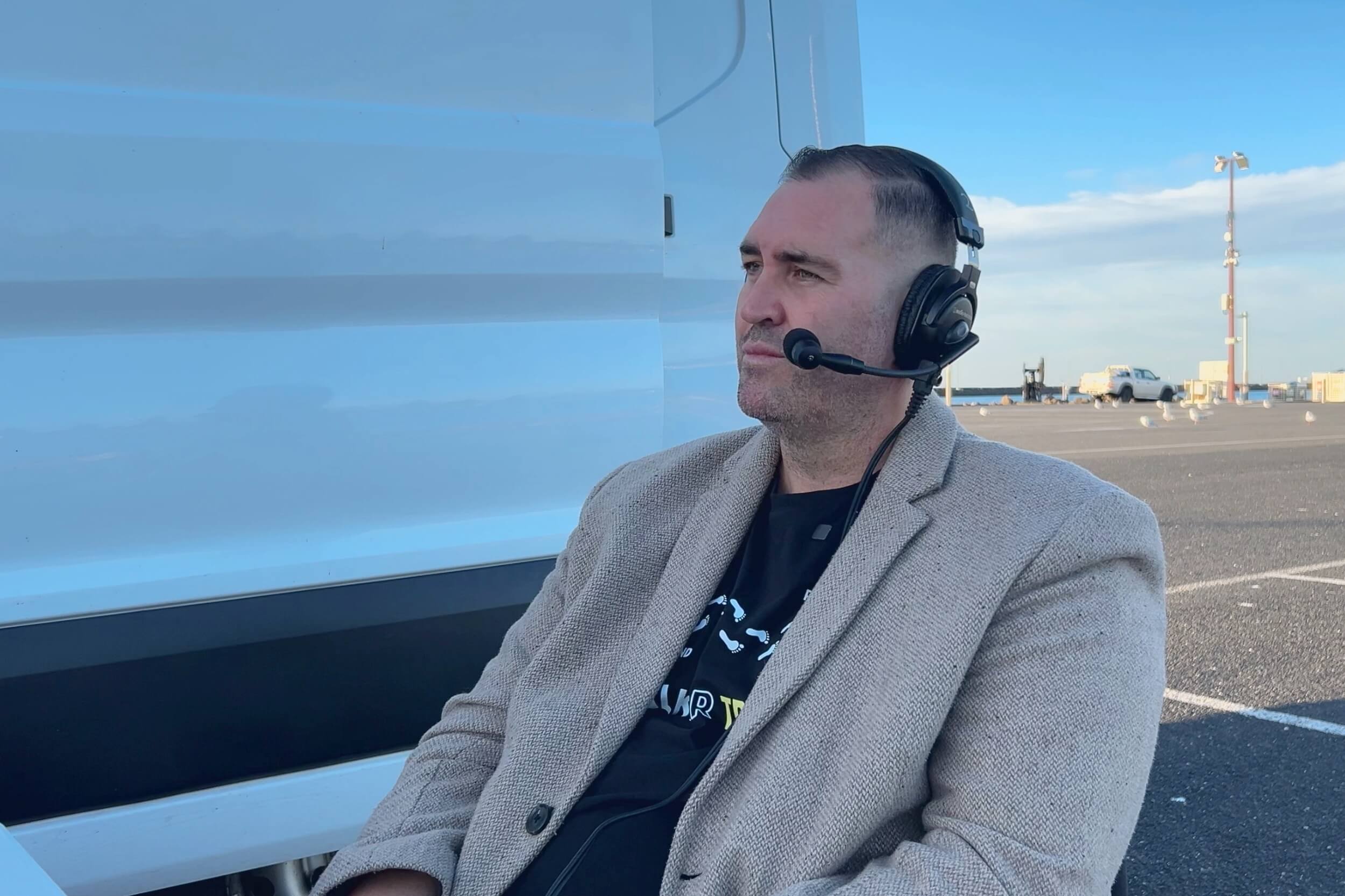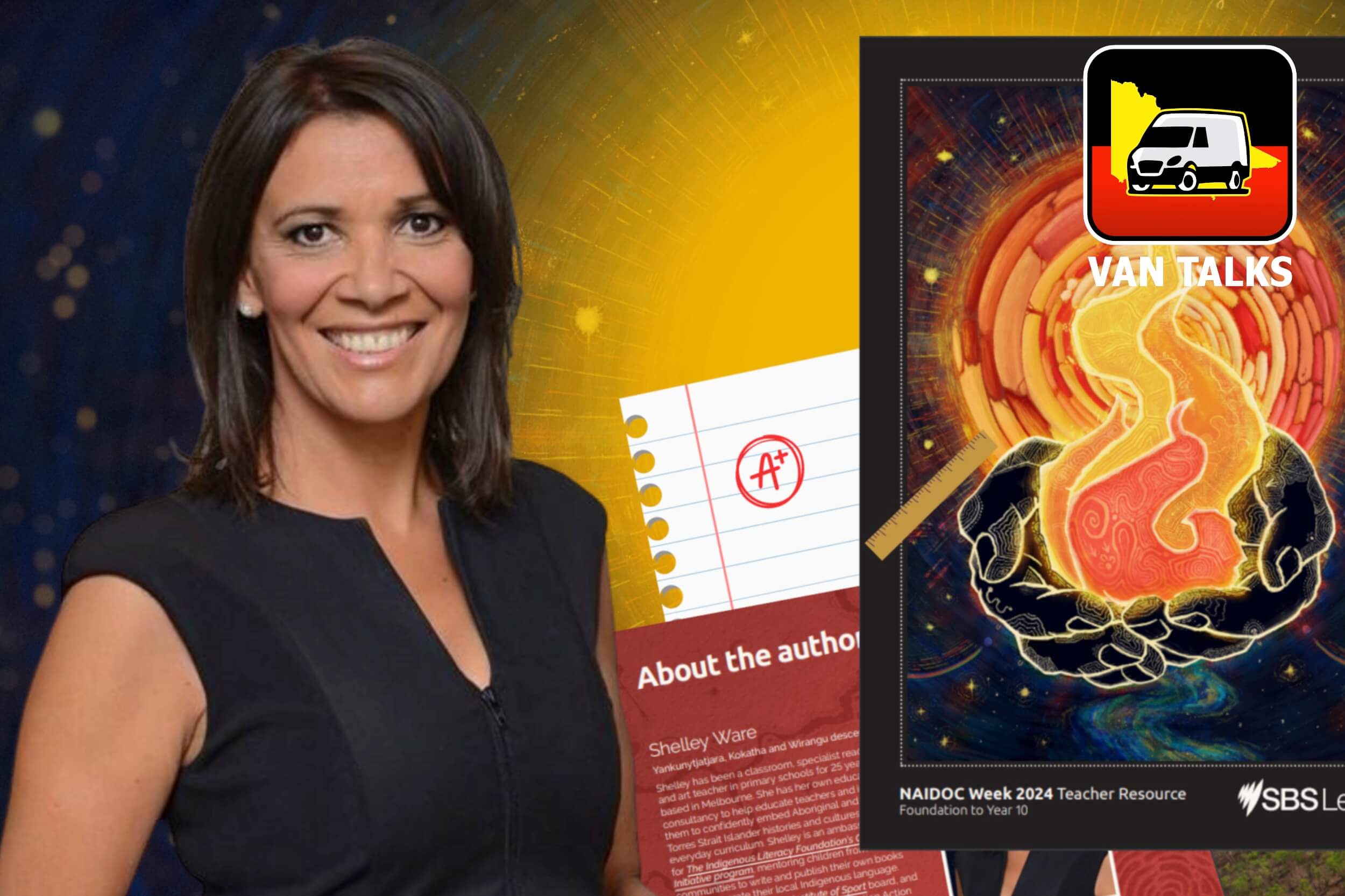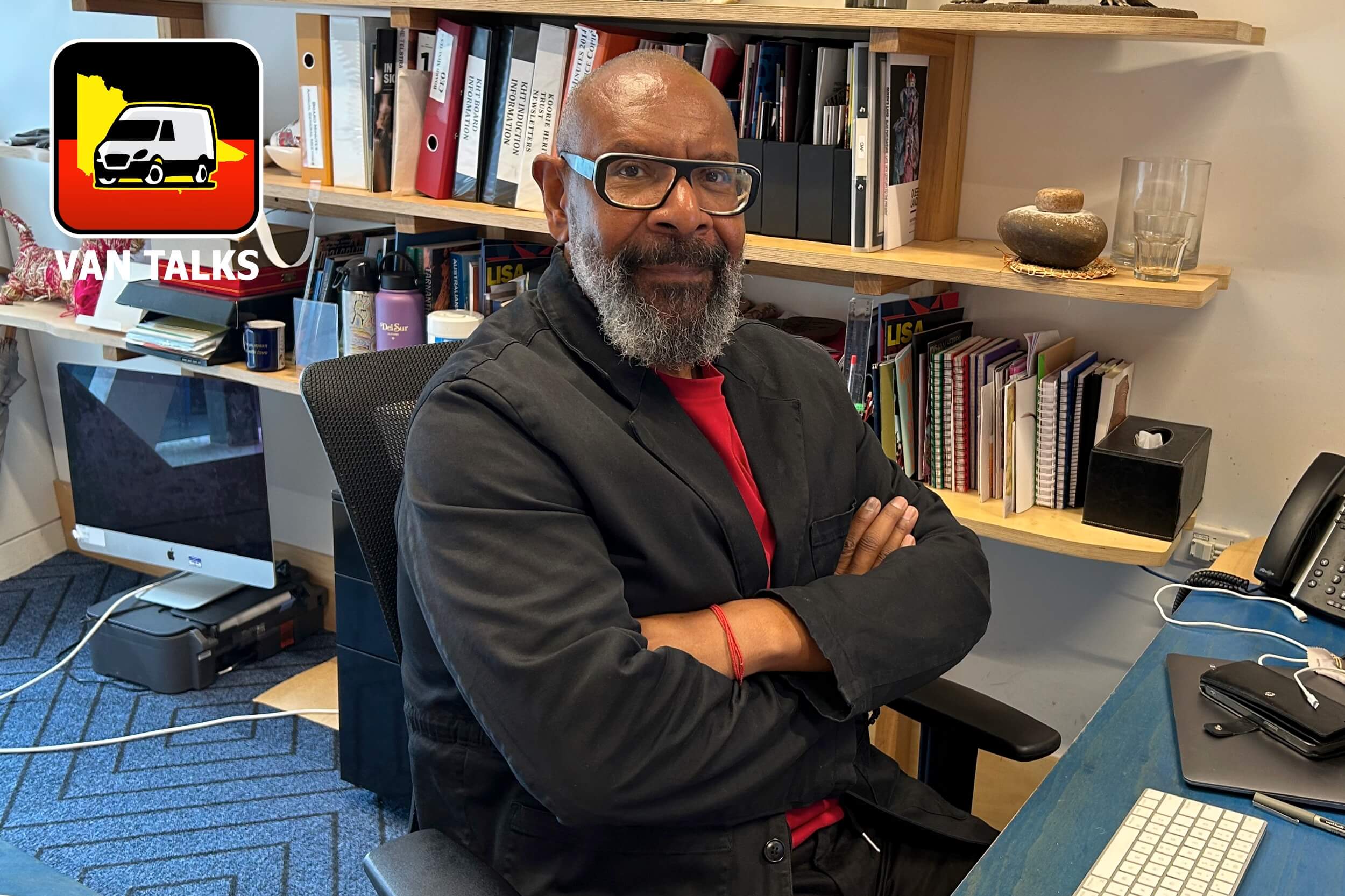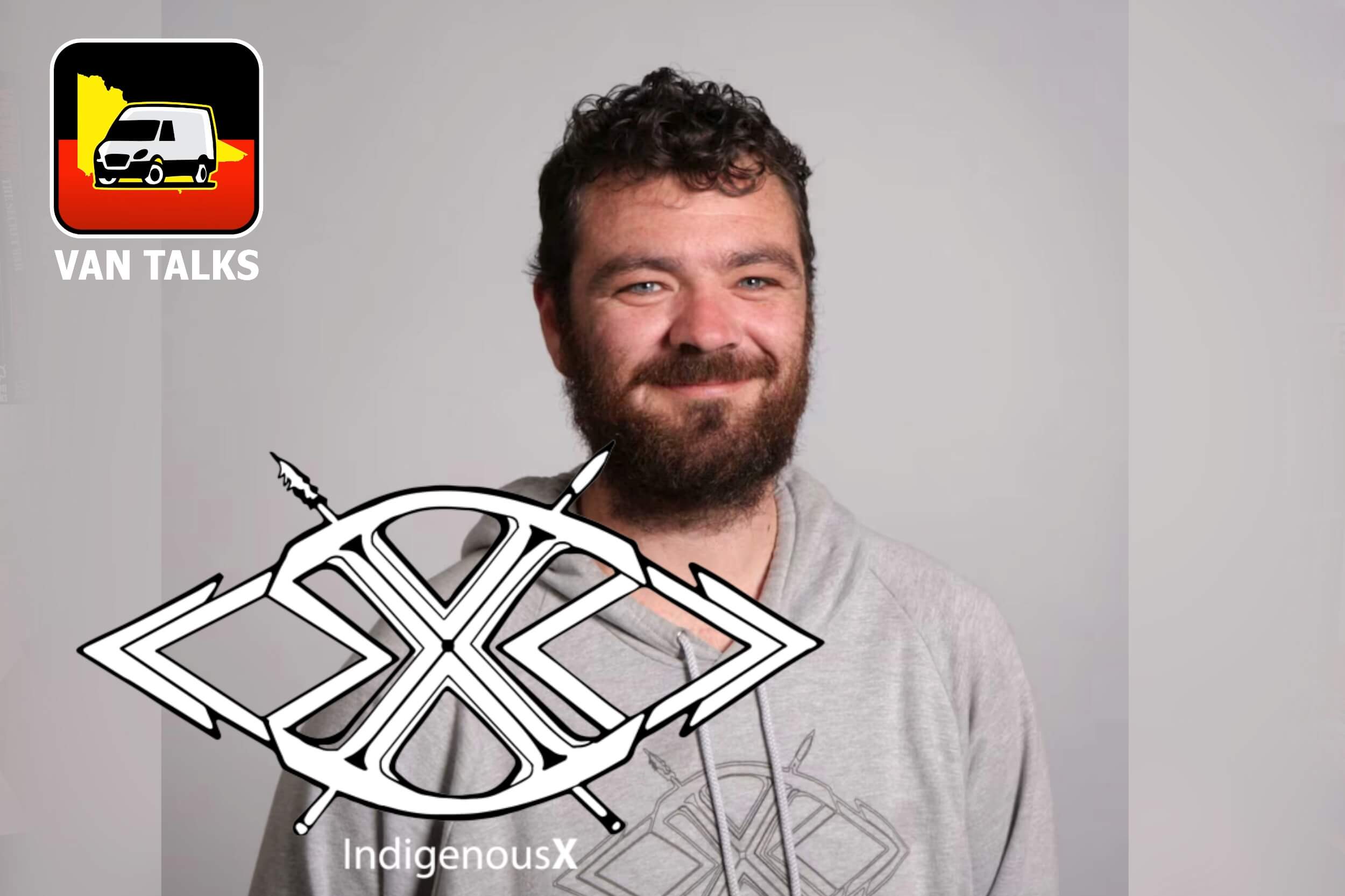Charles Pakana (Victorian Aboriginal News):
Today on the program, I’m joined by Dr. Dennis Foley, a descendant of the Gaimaragal people, of the Northern shore of Sydney, and the author of books such as What The Colonists Never Knew, and Repossession of Our Spirit. He’s also, on top of all that, the founding director of the New South Wales Indigenous Chamber of Commerce, the first professor of indigenous entrepreneurship in Australia, and currently a research professor with the National Center for Reconciliation, Truth and Justice. Dennis, thank you for speaking with me today.
Professor Dennis Foley:
Pleasure.
Charles:
Dennis, the main focus of this interview is to get an understanding of what indigenous entrepreneurship is and where it fits in our modern socio-economic environment in Australia. In broad brushstrokes and without being too much of an academic, I beg you, what is indigenous entrepreneurship?
Dennis:
Yeah. The concept of indigenous entrepreneurship, people tend to think straight away in a Western view and they don’t understand that every Black woman is an entrepreneur.
Charles:
[inaudible 00:01:03].
Dennis:
Well, she can make a meal out of nothing. I think of my grandmother, she was the greatest entrepreneur I’ve ever met. She could survive on chokos and pumpkins and things like that, and warrigal greens, and she could turn that into a meal, and whatever else she could find. So, really the concept of entrepreneurship, and I’ve had this argument with Aboriginal elders, particularly in Victoria, that it is not a Western thing. Entrepreneurship actually is an indigenous thing, and it dates back, we can go right back to the Gunditjmara people, we can go back to the eel farms and what they did. We’ve got record after record, even when the first settlers came here and they were doing tanning. It was Black fellows in the Shoalhaven district that supplied all the bark for the tanning. And they set up a little bit of a co-op amongst themselves, and that gave them finance, hard cash, where they could buy tools and they could set it up and they got their own dairy cattle.
So, our interaction with the Western entrepreneurial world is well recorded, but it’s the entrepreneurial activity in our world, separate from the colonizers that is so different because we are entrepreneurial and it goes way back. We’ve lived through ice ages, we’ve lived through incredible changes of climate, we’ve lived through relocation. And it’s that entrepreneurial interaction like people talk about songlines and songlines is a really involved thing. It’s not just a sharing a song or whatever. It’s involved with sharing genes, into marriage, it’s about policies of the military nature to get allies in case of battle. It’s also a way of sharing, if you’ve got an area that’s a surplus in a certain type of timber, you can make boomerangs. Well, bang, the boomerangs are traded to another area where they have don’t have any timber. And that’s exactly what happened in Central Australia. The boomerangs were traded up north and came down. Bailer shells were traded from Queensland, the Queensland coast to Central Australia.
Charles:
So, this is entrepreneurship. It’s been going back for generations.
Dennis:
But anthropologists, they don’t want to give that terminology. They say it’s bartering. But if we look at [inaudible 00:03:05] Mount Isa, Kalkadoon, they had a quarry of a really beautiful stone, really tight grain stone. Now, they used to drill and take them hours and hours, they’d put water in there and overnight in the middle of winter it had turned to ice, it had frozen and had cracked, and they’d get a big block and it was just enough for two men to carry. They’d carry it 100 miles and the next mob, they would have a little bit more knowledge and they’d split that rock down into smaller rocks and then it would go all the way to the coast. And when it got to the coast, you had a surplus economy. Now, surplus economy is one where you don’t have to hunt and gather much because there’s so much food stuff, and that’s what was available at the coast.
Now, there is where you had the artisans who could grind those bare rocks back into a sharp edge, and you’ve got an axe. Where did the axe go? Went back to Mount Isa. That’s entrepreneurial activity. That’s a way of taking a raw piece of material and value-adding it.
Charles:
How does it play out in today’s age though? Because the fact is that that sort of approach to entrepreneurship is not really right now going to put food on the table.
Dennis:
I think back to the old days of La Perouse, when I was a kid in the early ’50s, you had the boomerang makers there and the snake pit. They were entrepreneurial. Now, making artifacts like boomerangs and the shells, they used to make little shells at the Harbour Bridge and that, that led on to skills of dealing with the white man. And there’s a wonderful paper in the Torres Straits talking how to talk to white men, and it’s about how to deal with the other culture. And so it meant that the La Perouse mob all of a sudden had this social capital that they built up because that was destroyed by colonization. By putting us into camps, etc., they destroyed our social capital. So, they built it up. Now, those families went on to have their own businesses. There was a corner store, there was another person who sold second-hand clothing, but it went on and they built up, and that spread across into the western suburbs. And so you’ve got Aboriginal groups got more and more involved in business.
The Darug picked it up pretty quickly, and it came from that interaction. In the Lakes district in Victoria, we have artifact makers, we have Percy Pepper, his family, and the artifact makers that came from that, they all got involved in small business in whatever way they were, whether it was timber cutting, whether it was making timber furniture or tour groups in later years and they build up. But it was that building. So, entrepreneurship has come in, it doesn’t come in stages. You don’t just do a course and go out there and bang, become an entrepreneur. You’ve got to learn it. And you usually learn it from your parents or family. That’s why the Greeks, Italians and Chinese, for example, they’re so good at it because they’ve got it from their parents and their grandparents, and it goes way back to the old country, and they build up and that’s social capital. That’s what we are building up in Australia today.
Charles:
But once again, Dennis, let’s get back to how people might perceive entrepreneurship in this modern socio-economic environment that we call Australia. What are some of the clear examples that we’ve seen of success in indigenous entrepreneurship?
Dennis:
Okay. I’ll just pick up a couple of examples that come to mind. One of the ones that really grabs me, it’s all about opportunity recognition. So, you’ve got to look at what your assets are, what you’ve got access to, and most of us don’t have access to much at all. Young guy gets kicked out of prison. He’s finished his term in prison, up in Cessnock Way. He comes out of prison, he’s got no skills. He’s been institutionalized all his life. A common story amongst a lot of our youth. He’s only young, he’s in his mid-20s. He comes out, he sat down with the Indigenous Chamber of Commerce and he went through what’s available now. He knew he was good at his hands, he knew he was good as a builder, but he didn’t have any building qualifications.
A job came up for asbestos removal, went straight in there, learnt the trade, learnt it inside out. He now runs one of the biggest asbestos removal companies in the Hunter Valley, if not the biggest. In fact, he did my house. And he was so professional because he’s learned, he’s hungry, and he employs a lot of people who have records because it’s difficult for them to get a job. They work hard. He’s built it up and he gives back to the community. Now, that’s one example. Another example is a husband and wife, they were in the public service. They only got to level four. They knew they were never going to get any further, A, because they’re Black and it was Queensland. They pooled their resources and they bought one of those Midnight Owl type shops. And that was really interesting. That was in Fairfield. I hope I don’t give them away. I’m going back a few years.
Now, they had the trouble of humbugging because all of a sudden all the family from Inala would come in and borrow a loaf of bread, a pack of cigarettes, a bottle milk. And they soon realized, because they were talking to us at the Chamber of Commerce, they soon realized that, hey, they’ve got to stop this. And they had to learn to say the word no and it killed them to say it’s a family because the family didn’t understand it. But when they started to do that, then they started to employ that family’s children in there and they built up, they got skills in how to run a shop. They built this shop up, they built their shop up to a great turnover, sold it, and they went on to another business. And it goes on.
They’re just some of the classic examples. We’ve got a plumber, and he started out and he really struggled as a plumber and he hid his aboriginality. He teed up with another guy who had a little bit more money behind him, and he was an electrician, I think and the two got together. And they saw there was an opportunity in construction for cranes, and they started doing cranes, and they started employing Aboriginal people around them. So, around about 60% of the work staff are Aboriginal. There’s that entrepreneurial aspect of giving back to your community and the social aspect are there. But they soon built up because they offered people service. And in the crane industry, apparently, there was poor service and they knew just how to do that.
Charles:
I’m interested though, you made mentioned in that last particular case study that they were then giving back to their community. That comes to the various measures of success that you can apply to indigenous entrepreneurship. And it isn’t necessarily about money and personal status. And according to your research, there’s also what you refer to as the cultural context for success. So, what are some of the key factors we’re looking at here when it comes to cultural context, success in indigenous entrepreneurship?
Dennis:
I’ll get back to success, what is success? But in that instance of the crane people, there was a young guy that came up and he started, he was a street kid, living on the street. They got him in, they fed him, they clothed him, gave him somewhere to live. He worked his way up and he became a crane driver. You know the guys that climb up in the cabins sit there for 12 hours a day.
Charles:
Yeah. The mad people.
Dennis:
Yep. He saved up, he met a young lady, fell in love, saved up, and he got enough money to put a deposit on a house. Now, how many construction companies do you know stop for an afternoon and have a barbecue-
Charles:
What to celebrate the purchase of a home?
Dennis:
Celebrate him buying his home. Because here’s a young Black fellow who came from nothing and he’s working in an Aboriginal organization, and that was the first million dollar organization I’ve worked with. But the other aspect of that, they have a lot of laborers coming in and they bring the kids in and look, not all the kids make it, a large percentage just drift in and drift out. But the big marker for them was when the kids could afford and they would take on and take MBF, HCF or IMB or whatever, health fund that they start deducting from their wages, another course for a barbecue to congratulate them. So, that was seen as a benchmark for the other employees to look at and say, “Wow. There’s a Black fellow. He can pay for medical benefits.” And see here, you’re building up his esteem, but it’s done on a very low-key, but it’s still cultural. It’s a different cultural aspect.
Charles:
That sort of commentary, the ability to then go and gain private medical health insurance, to get your own home, these smack of addressing, in real terms, the gaps that exist, closing the gaps. So, what role does indigenous entrepreneurship have in closing the gap rather than waiting for the government to address all these concerns?
Dennis:
The greatest thing about Aboriginal businesses, now, bear in mind when I first started doing my research 35 years ago, it was very hard to find an Aboriginal entrepreneur. They were there, but they didn’t want to identify as Aboriginal because of the society we lived in. It’s becoming more and more common that people stand up now and they’re proud, and they’re Black, and you can get it. So, success comes in many different ways and it can come from failure after failure. But one of the greatest definitions that’s been given to me by people is that if they’re successful in their business, it’s not about big profits, but it’s about employing people. And research after research, and research at ANU and another Melbourne uni, they’ll tell you that Aboriginal businesses employ more Aboriginal people per capita than any other business.
Now, with that comes a huge cost because when you employ an Aboriginal person, you actually allow for, sorry time, you allow for other issues, you allow for cultural things. Normal businesses don’t do that. So, Aboriginal businesses allow that, yet they can still make a profit. But as it was told to me by several men and women, success for them is that I can pay my rates. I can live in a house where I want to live. I’m not determined by public housing. I can buy a car, I can send my kids to the school that I want to send them to. And that was their big thing. It wasn’t about making dollars. But all of those companies that have built up that I’ve watched over 20, 30 years, what’s amazing is they all end up having a business aimed at giving back to society. There’s one lady who’s very successful as a consultant, she has a small company that looks after street girls, girls living on the street doing it tough.
So, she has a couple of, employees a couple of counselors. That comes out of her direct profit. Yeah, it’s a tax deduction, but she doesn’t have to do it. And she could be living and going Hawaii and living the high life, but she doesn’t. She gives back. And that’s what I find time and time again in Aboriginal businesses, they actually give back to community in different ways. There’s another really good case, if I can push that in, young fellow, he was one of my students and he was a failure as a student. He dropped out, he won a great award. He won $10,000. That gave him a capital base and he got a really good job, with that job, he then could afford to buy a house way out from where he came from, and I can’t say where it is because I’ll give him away, but he could afford a job.
He bought a house. He then had a house because his mum lived in a shed on the creek, and I’m going back to this is early-1990s, mid-1990s. She still lived in a shed on the creek. There was a waterproof, warm house for her. It didn’t cost much. It was in her outback town. She’s living in there doing great. Now, old mum, the auntie, she used to look after all the young girls, kids because a lot of the girls in the town were single mums. So, therefore they then had a secure house where she could babysit the kids, so the girls could go off and work. But the most important thing is that she now had a warm place for her other son. Her other son suffered terribly from lung problems. He fixed his lung problems up and also there was money to afford for his pills. So, that’s the cultural context, which we’re talking about.
Charles:
Absolutely.
Dennis:
And it’s a domino effect and it rolls out, but usually it’s so sublime.
Charles:
So, what about the government? So, the government’s always chasing its tail, it seems, or all the governments are chasing their tails on, how do we address closing the gap? And I want to bring it back to that. Do you believe that one of the strong measures that can be taken to start closing the gaps is to seek a greater investment from government and other sectors in Black businesses, in indigenous entrepreneurship?
Dennis:
There is a major part of me that says, government stay out of this. Let us do it ourselves. We’ll do it better.
Charles:
But realistically?
Dennis:
Now, I don’t want to rubbish Supply Nation. I’m not here for that. But you look at Supply Nation, they’ve been supported by the government for millions and millions, and millions of dollars.
Charles:
Sure.
Dennis:
What have they achieved? Yes, they’ve achieved some great stuff and they do blow the figures out a little bit, but they’re doing a little bit of research and doing some great stuff. But the indigenous Chambers of Commerce who get hardly any funding, except for Kinaway. Kinaway is a different example because they had a state government who knew, okay, if we put the money in there, we employ a CEO, we give them a kickstart, and they do fantastic stuff, their training courses and everything else. Kinaway is by far the best example in Australia. They’ve used their government funding and used it well.
New South Wales indigenous Chamber of Commerce have been given crumbs. I’ve got no answer for that. But what they do with what they’ve got is fantastic, and the number of people they’ve put through, and they’ve helped. We took on the Australian Taxation Office because we had a mum and she had started up a cleaning business, and the Australian Taxation Office said these people were not subcontractors, they were actually employees. And we took them on, and luckily we had a few supporters in power and we beat the Australian Taxation Office.
Charles:
But Dennis, let me push you on this point. The fact is that we do require government input right now, and the onus is on the government to assist in closing the gaps. So, is there a requirement on government to start investing in Black businesses if it wants to achieve real closure in these gaps?
Dennis:
The investment of government in Black businesses should come from employing Black businesses and allowing Black businesses to tender in a different process to the mainstream tendering.
Charles:
Now, this is something that you’ve had issues with over the years, the frustrations when it comes to Black businesses tendering to government. So, what is this different system that you believe needs to be implemented?
Dennis:
I believe there could be a one or a two-page tender document, and they can do the big 10 page or 20 page document and have that on file. And then for every tender, they just do one or two page. They don’t have to go through that whole process again. Because Aboriginal small business does not have the time to do that. So, there needs to be a fast tracking of tendering and it’s got to be shown up so it’s not opaque, that it’s translucent, that you can see exactly what’s going on with that tendering process. Because I’ve seen some great businesses sidelined on tendering jobs which they should have got, and that really kills their business.
Like when they built the hospital up there in Taree, they said, “Oh, we’ve got all these Aboriginal businesses.” The percentage that they had was actually a concreting company that was South Pacific. There wasn’t one Aboriginal person employed on it. They were all South Pacific. They were Black. Oh, we’ve covered our Black quota. This is the construction company. So, the government accepted that. There needs to be a bit of auditing and there needs to be fines for it.
Charles:
That also brings up the matter of, and I’m going to bring this one up, Black cladding. Now, I’ve spoken to Michelle Evans about this, Matthew Karakalukas from South Australia about this. I know you’ve spoken out loudly about this often. How big a problem do you see it still is right now, Black cladding?
Dennis:
I think with Supply Nation, it still is a problem because we’re still seeing one of those major Black cladding companies aligned with the Department of Defense that is still getting large tenders. And so it’s still happening. I hope that it’s decreasing. Look, it’s too easy for people to come in and get a contract and get a supply by just having Aboriginal people there as nominees.
Charles:
Yeah. What are some of the other challenges that you see that confront Black businesses and indigenous entrepreneurship? Because you’ve mentioned in some of your other research areas, access to capital and the impact of racial and gender discrimination. What are some of those key things as we stand now in 2025?
Dennis:
Well, I think the referendum knocked us around for racial discrimination. It’s now become legitimate to be discriminatory, and that is hurting a lot of Aboriginal businesses. I’m currently doing some work in high schools, and it’s just blown out of proportion in high schools. And the businesses that I continually talk to, they cop it every day. In fact, I was talking to someone only yesterday about it, where they have never had a problem with racial discrimination and they’ve now got clients being rude to them and sarcastic comments, and they’ve lost businesses and they believe it’s because of that. But getting back to your question, I honestly believe the answer to everything is education. And if we can keep our kids in school and we can have an education system that provides where they’re proud to be Aboriginal, where there’s an education system where racial discrimination is limited or minimized in the school system, where we can keep our kids in there longer than grade nine.
I work on the parole board in Canberra. Now, 99%, I would say, of all Aboriginal people who are in the system, left school at grade six, grade seven, grade eight. If we can keep our people, our young people in school, educate them and get through, they’ve got a far better chance. It’s not necessarily about doing fancy courses, but it’s having that grounded knowledge, that numeracy and literacy that will help you in later life. And that’s really key. And what’s important, you don’t realize, you say, “Oh yeah. Having a job, that’s great.” But if you’ve got a job, you can live in a residence and your health improves dramatically.
We talk about the key issues of closing the gap. Employment equates to health, and usually it equates to education as well. Because if you’ve got employment, you’ve got good health, there’s a good chance your kids are going to have a better life as well. So, it links in, and I think that’s what they’ve missed. They’re throwing money like band-aids around instead of tackling the real issues. And one of the key issues is racial discrimination, but it’s by far education. That’s a key.
Charles:
Dennis Foley, thanks so much indeed for your time today, brother.
Dennis:
Thank you.








0 Comments